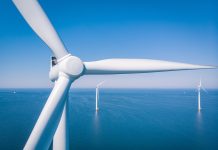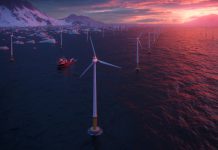At the heart of innovation lies the search for improvement — a better, faster, more efficient way. A less expensive way.
In 1993, Peter Janicki, an engineer, and Founder and CEO of Janicki Machine Design answered innovation’s call and revolutionized composites fabrication for the marine manufacturing industry.
The traditional method of producing molds for the fabrication of composite materials was expensive, time consuming, and labor intensive. Janicki had a better way — an innovation.
He developed a method of producing the molds by utilizing large-scale, high-precision CNC machining. The results were beyond impressive. When introduced, Janicki’s innovation — now commonplace in the industry — resulted in less expensive molds that could be produced in a fraction of the time required with traditional methods. Projects that once took several months to finish were being completed in two weeks or less.
In the two decades since his pioneering efforts, the company he founded, now known as Janicki Industries, continues to place innovation — research and development — at the center of its business philosophy.
Headquartered in Sedro-Woolley, Washington, near the halfway point between Seattle and Vancouver, Janicki Industries has diversified into other industries which rely heavily on composites fabrication — aerospace, wind energy, defense, and transportation, among others.
“We’re a privately owned, full-service engineering and manufacturing company specializing in making products from advanced composite materials with a unique claim of large parts, because we have high-precision CNC mills that are among the largest in the world,” said Steven Lynn, marketing director for Janicki Industries.
That large-scale capability is the primary factor that sets the company apart from others in the industry, he said. “We are the large-scale, high-precision producers. We can make things the size of a conference room table, but so can a million other machine shops. If a customer wants something 100 or 200 feet long, and they want it made to within .003” for it’s unique size, we’re the unique company to provide that for them.”
That capability is necessary for applications in the wind energy industry, which Janicki is able to serve primarily in the production of wind turbine rotor blades, as well as in the design and manufacture of the molds used in blade fabrication.
The company now operates a total of nine large-scale, high-precision 5-axis CNC mills at three manufacturing/production centers in Washington State and Utah.
In Washington, two facilities —located in Sedro-Woolley and Hamilton — boast nearly 290,000 square feet of production capacity in five buildings. Combined, the two facilities encompass 116 acres. The Washington sites house six of the CNC mills, with envelope sizes up to 100 feet by 20 feet by 8 feet, making them among the largest in the world.
Located by Hill Air Force Base, the Utah facility is equipped with three CNC mills, measuring up to 80 feet by 14 feet by 6 feet. At 100,000 square-feet, this facility is optimized for producing large-scale parts at a high volume.
Janicki’s facilities also house other composites manufacturing assets, including ovens, autoclaves, and furnaces, as well as on-site shops for machining, painting, curing, and welding.
However, the company’s work doesn’t just take place on the production room floor. Aligning both with its engineering foundation and commitment to innovation, the company employs unique methods of project management and customer co-development that allows project status visibility for both parties throughout all stages of a project.
“We tell our customers to ‘bring us your challenges.’ We have over 600 employees, of which about 130 are engineers, 20 percent have advanced degrees,” Lynn said. “Some companies don’t understand composites yet. Our guys do. They’ve been designing with them for twenty years. We work together with our customers to design their solution and help them figure out what material to use, and then we go ahead and build it for them. We help them with their solution.”
Janicki’s project management paradigm, centered around an enterprise solution from SAP, allows the company ultimately to predict project completion status and delivery date with a high degree of reliability — 90 percent or above.
“That allows us to project or forecast our revenue and costs but it also allows our customers to do the same thing,” Lynn said. “What our customers like about us that is a little bit unique is that we do have a project manager in charge of every project for a customer and that we give that customer full visibility and we know and keep up-to-date the schedule of activities going on, so that everybody can have accurate forecasts.



























